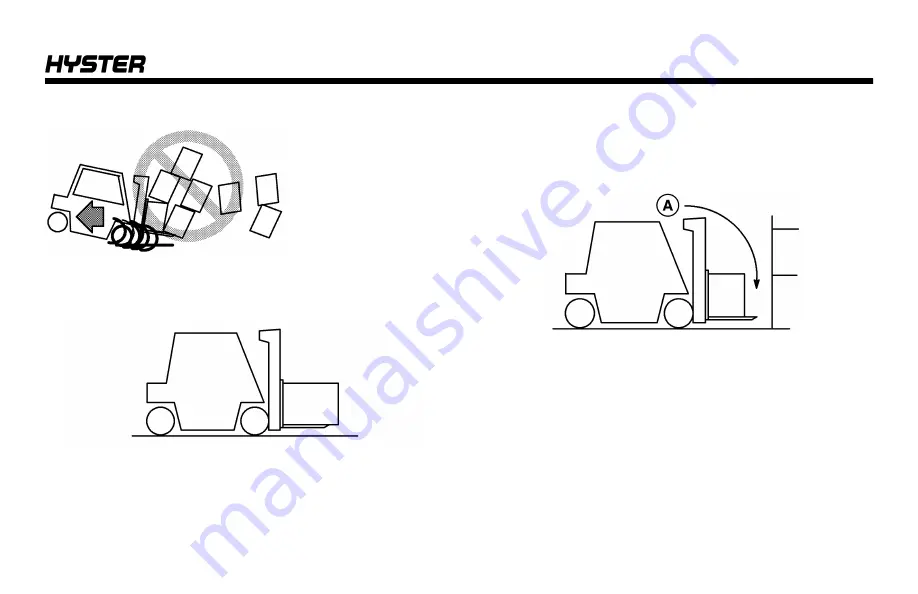
How to Engage and Disengage a Load
1.
Avoid fast starts.
Sudden movement
can cause the lift
truck to tip. People
can be hurt or killed
and material can be
damaged.
Approach the load carefully. Verify that the truck is perpen-
dicular to the load. Raise the forks to the proper height for
engaging the load.
2.
Move forward slowly until the forks are in position under
the load. The forks must support at least two-thirds of the
length of the load. Verify that the load is centered between
the forks.
3.
Make sure that the load is centered between the forks.
Verify that the forks do not extend past the load so that
loads or equipment that are behind the load being lifted are
not damaged. Lift the load a small distance from the floor to
verify the lift truck has the capacity to lift the load.
A.
BE CAREFUL OF FORKS BEYOND THE LOAD.
4.
If the forks are longer than the load, move the forks
under the load so that the tips of the forks do not extend
beyond the load. Lift the load from the surface. Move
Back-
ward
a few inches, then lower the load onto the surface
and inch
Forward
to engage the load against the carriage.
Tilt the mast backward just far enough to lift the load from
the surface.
Operating Procedures
121
Property of American Airlines






































